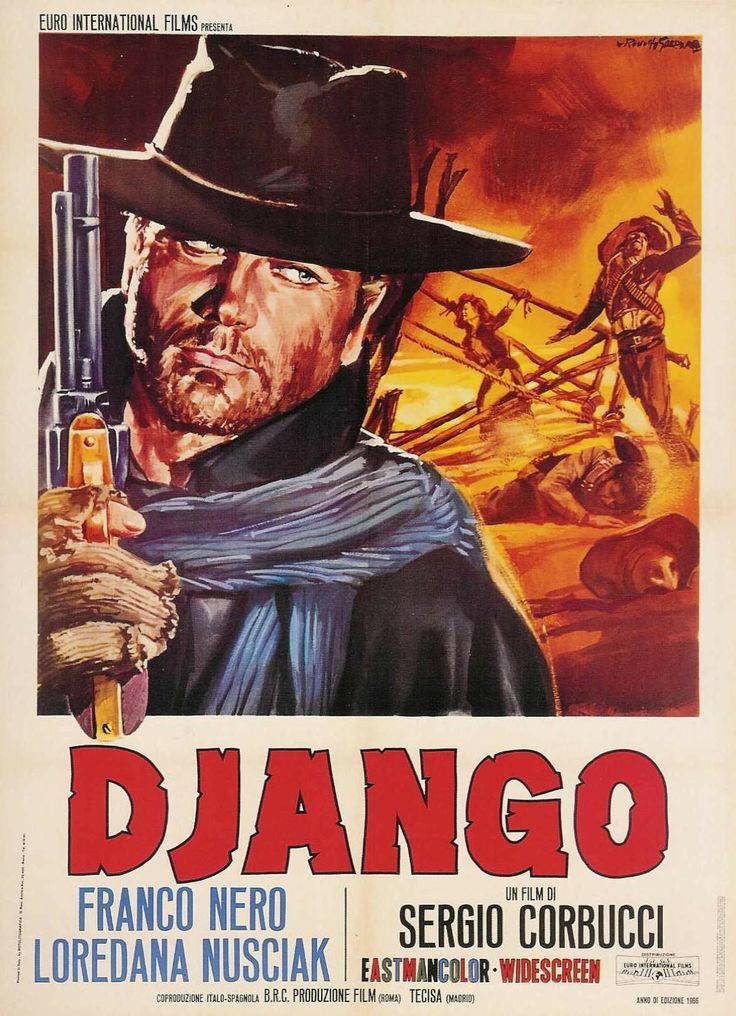
As the popularity of westerns began to wane in America, the Italians picked up the mantle and ran with it. A number of westerns had been produced in Europe before Sergio Leone’s A Fistful of Dollars in 1964 but it was that film that is generally credited as the first Spaghetti Western. With its distinctive visual style, unusual score by Ennio Morricone, and iconic anti-hero played by Clint Eastwood, A Fistful of Dollars set the template for all the Spaghetti Westerns to follow.
It was a huge success and naturally, numerous films came out soon after, that aped its style and tried to cash in on its success. Perhaps the most successful, both financially and artistically, was Sergio Corbucci’s Django. It was also a big success. It launched the career of Franco Nero and spawned some 30 different sequels (most of them unofficial).
It begins with our hero, Django (Nero), a former Union soldier walking alone in the wilderness somewhere along the US/Mexican border, dragging a coffin behind him. It is a magnificent image to open a film on, one of the all-time great opening images in fact. The movie ends with another indelible image, one that I won’t spoil, but it, too, is an all-timer. The film that happens in between those fantastic moments is also quite good.
Django stumbles upon a prostitute (Loredana Nusciak) about to be literally crucified upon a burning cross by some racist Red Shirts. Django shoots the men and offers the woman protection.
The two walk to a nearby town, half-deserted save for a bartender named Nathaniel (Ángel Álvarez) and a handful of prostitutes. Nathaniel tells them that the townspeople have mostly been killed off due to the feud between the Redshirts and some Mexican revolutionaries.
The plot, with Django working both sides of the fight, is very similar to A Fistful of Dollars (which itself was inspired by Akira Kurosawa’s Yojimbo, which in turn was inspired by Dashiell Hammett’s novels The Glass Key and Red Harvest.)
But first, there is a lot of discussion as to just exactly what is in that coffin he’s been dragging around. Most seem to think it holds an actual body which produces a lot of signs of the cross. His enemies often joke that he’s just being helpful, bringing his own coffin along as they are about to kill him.
But friends, and this does count as a spoiler, that thing holds one big ass machine gun. When the Red Shirts come down he hauls it out and mows them down in glorious fashion.
He works with the Mexicans for a time, but he has no interest in their politics. Like Eastwood in those Leone films, Django is a man on his own. It is frequently violent, periodically hilarious, and always cool.
It isn’t quite as stylish as Leone’s Dollars Trilogy but it is still pretty darn great. Franco Nero is terrific as Django and the score from Luis Bacalov is fantastic. It makes a terrific way for me to end my Westerns in March series.
